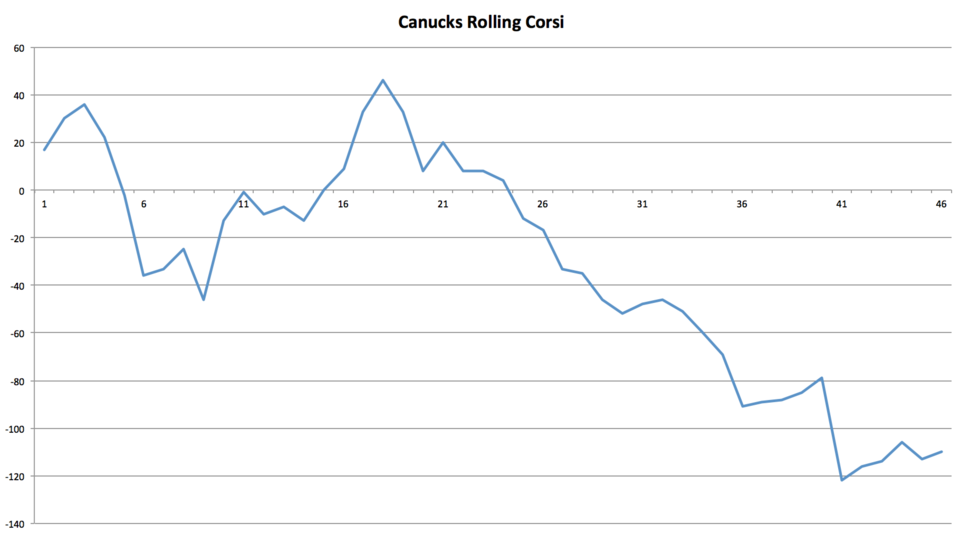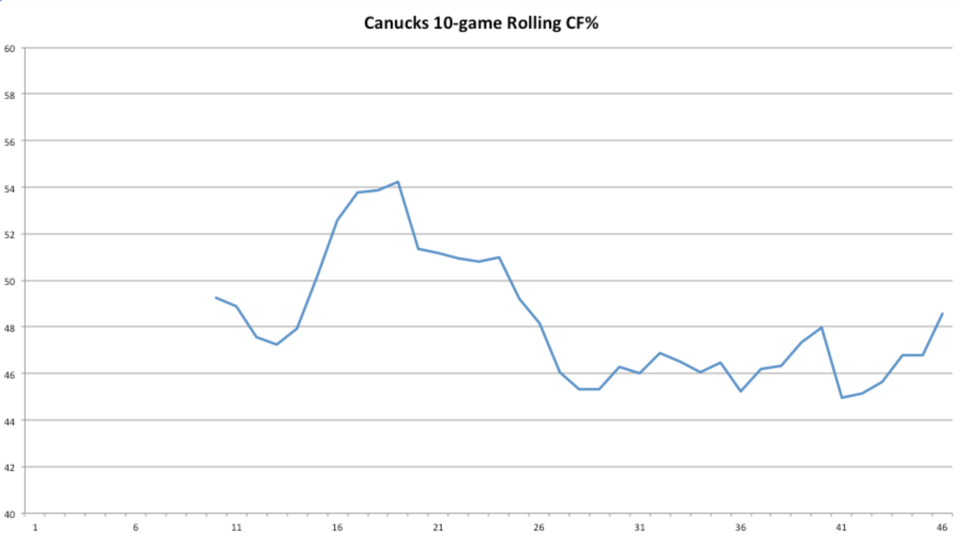The Canucks are currently one point out of a wild card playoff spot in the Western Conference. They’ve won seven of their last eleven games and picked up at least a point in ten of those games.
Accordingly, I got some pushback when my recent article suggested, or rather outright stated, that the Canucks are bad.
Let’s be clear: the point of the article wasn’t, “The Canucks are bad and you should feel bad,” but that the Canucks aren’t good enough to continue making the same choices that have led them to this point. This is particularly true when it comes to the power play, which has been bad all season and shows no signs of improvement.
But with the Canucks recent stretch of games, the question remains: are they getting better? Are things improving for the Canucks? Is there reason for optimism in the second half of the season?
I would argue that there is always room for optimism and hope. As much as I am a sportswriter, I am also a fan. I would love to see the Canucks overcome the odds and make the playoffs.
But let’s take a look at the underlying numbers and how they have been trending this season and see if they suggest a reason for optimism. Let’s start with the Canucks’ raw corsi, ie. the shot attempts for and against at 5-on-5. The chart below is the Canucks’ rolling corsi, added up over the course of the season.

As you can see, things started off pretty good for the Canucks at the beginning of the season, then took a precipitous dive during their nine-game losing streak. Their corsi climbed back up towards the tail end of that streak, hit a peak during a decent stretch of play in November, then jumped off a cliff.
But you can also see a slight uptick over the last ten games, apart from game 41, when they got out-shot 46-13 by the Calgary Flames, but somehow stole a victory. “Somehow” is my new nickname for Ryan Miller, by the way.
Let’s take a look at the Canucks’ rolling average corsi percentage, which won’t be quite as calamitous looking as their raw corsi.

This gives us a similar-looking chart, but with a smaller jump off a cliff, as it's giving us 10-game chunks of data instead of adding it all up over time. In November and early December, the Canucks were posting decent possession numbers, if not always getting the results they hoped. We also see an upward trend of late, though they are still well below 50%.
So, it’s too early to say that things are looking good for the Canucks going forward, but things are trending up a little bit. It wouldn’t take much for that positive trend to go south, however, as the once again horrific drop at game 41 on this chart makes clear.
It’s also troubling that the only way they’ve seen this improvement — which is, again, still below 50% in corsi percentage — is by playing dull, low-event hockey that depends on excellent goaltending and eking out one-goal victories or hanging on until overtime to get the extra point. It’s not a recipe for long-term success and has a tendency to really wear a team out.
But the improvement also has to do with finally getting Brandon Sutter and Jayson Megna away from the Sedins and landing on lines that make sense. As pointed out by @natevk on Twitter, the Canucks’ current combinations at forward are all boasting a positive corsi differential.
The fourth line of Michael Chaput, Brendan Gaunce, and Jack Skille lead the way with a 58.26% corsi together. They’ve been a solid line that has been put into a position to succeed by limiting their minutes against opponent’s top lines and letting them grind along the boards against other fourth lines.
Next is Loui Eriksson with the Sedins at 56.96%, a combination that hasn’t lit up the scoreboard just yet, but still controls play and outscores the opposition.
Then it’s Brandon Sutter, Markus Granlund, and Jayson Megna at 55.56%, though there is the caveat of a small sample size with that line, as they’ve played just over 57 minutes together. Still, Megna’s speed fits the Sutter line far better than it ever did the Sedin line and that group. Just count me as skeptical until they keep this going long-term.
And finally there’s Bo Horvat, Sven Baertschi, and Alex Burrows at 51.71%. That may seem low, but they have a larger sample size than all the other lines and frequently find themselves up against tough opposition. Accordingly, I have far more confidence in the Horvat line continuing their strong play than the Sutter or Gaunce lines.
So, there’s room for optimism. The Canucks have been bad all season and, in many ways, are still bad. But they’re slowly making their way towards, at the very least, mediocre. And that’s almost good.
*All stats via naturalstattrick.com and corsica.hockey



